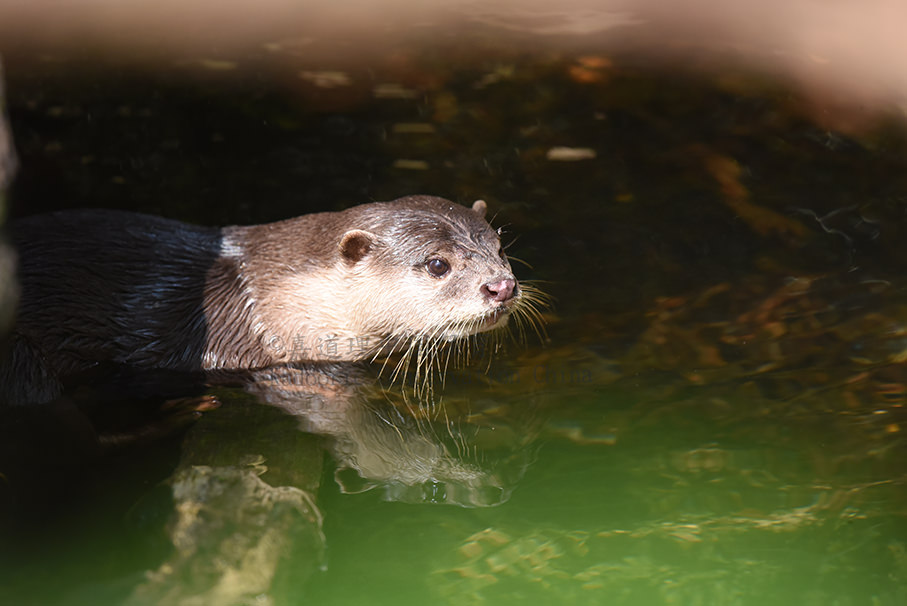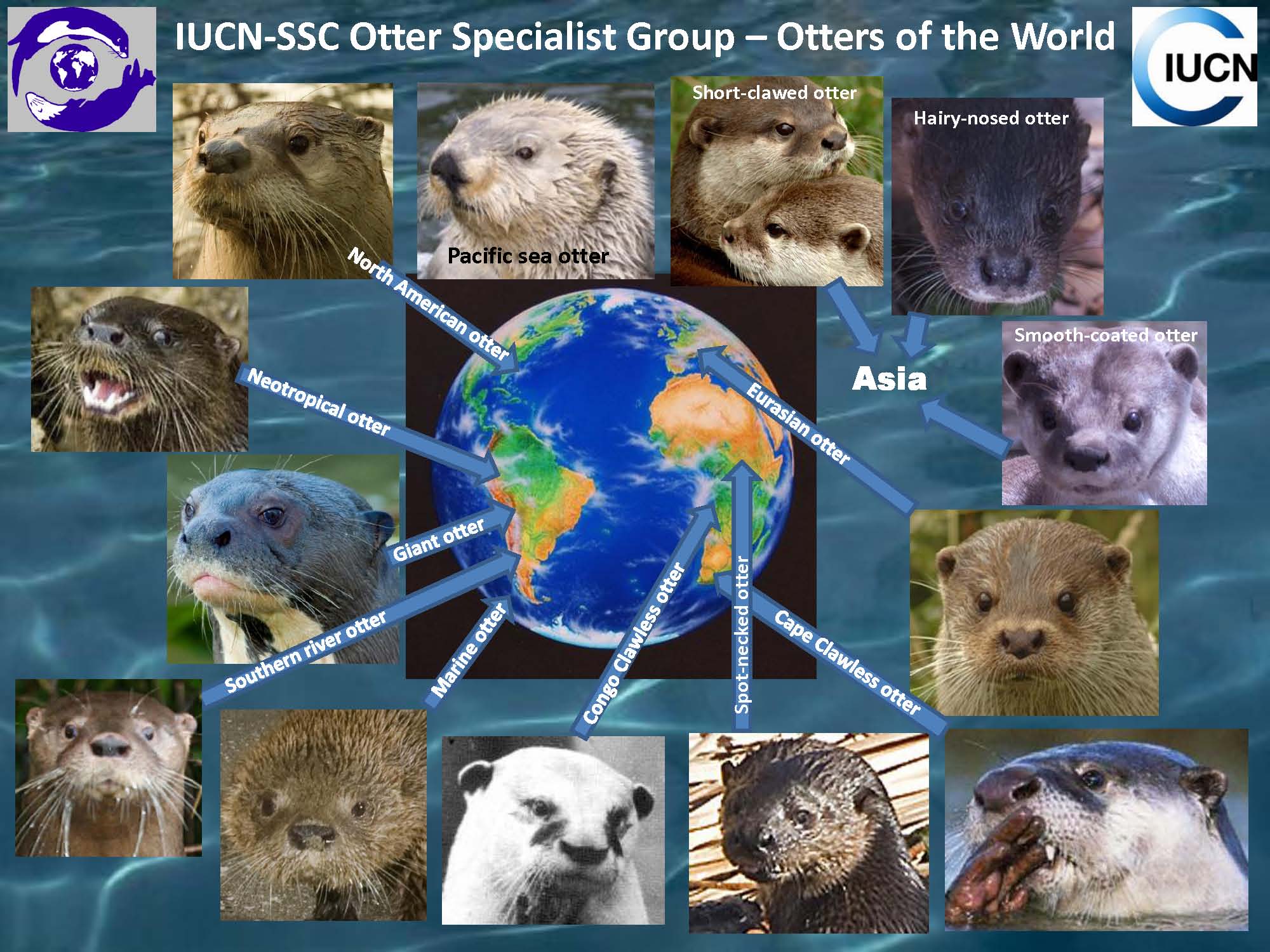Why are otters being overlooked in China?
Written by Li Fei, Conservation Officer of Kadoorie Conservation China
Since joining Kadoorie Conservation China (KCC), a department of KFBG, four years ago, I’ve been assigned to conducting research and surveys on otters. Just like others in the team, we are all involved on several projects and I can only spend about a third of my work time on otters. Yet I’m one of the few lucky ones as very little work is done on these adorable mammals in China.
The 13th International Otter Congress organised by the IUCN Otter Specialist Group was held in Singapore in early July. Of the 120 delegates attending the meeting, the two of us from KCC were the only China representatives. We were far outnumbered by neighbouring countries including Japan, where the Japanese River Otter (Lutra lutra whiteleyi) was declared extinct in 2012 - yet they sent 11 representatives to the Congress.
Distribution overview of the 13 otter species worldwide
Source: http://www.otterspecialistgroup.org/Images/Wallpaper.jpg
What are otters? Why are they being overlooked?
Otters are carnivorous mammals of the weasel family. Their body structures have special adaptations to live a semi-aquatic lifestyle. Their heads are flattened, while their eyes and ears are small. Their ears and nostrils have valve-like structures that shut when underwater. They have short limbs and webbed feet; their sleek fur, streamlined bodies and muscular tails make them excellent swimmers.
There are 13 extant species of otter worldwide. However, except for the North American Otter (Lontra canadensis), all other species are under different levels of threat. Otters used to be very widespread in the extensive freshwater ecosystems of China. The high harvesting pressure of the pelt trade and medicine has decimated the otter populations with many local extinctions as early as the 1980s!
Enlisting China’s three species of otters as Class II State Key Protected Species since 1989 failed to draw attention. In Europe and the Americas, otter species such as Lutra lutra, Lontra canadensis and Pteronura brasiliensis have long been subjected to focused research and conservation work, but their counterparts in China haven’t had the same luck. Not only is there a lack of surveys and conservation plans, scientific research on otters is scarce.

 Asian Short-clawed Otter (Aonyx cinereus) is one of the three otter species native to China. Photo taken at Singapore Zoo.
Asian Short-clawed Otter (Aonyx cinereus) is one of the three otter species native to China. Photo taken at Singapore Zoo.
So, why are otters being overlooked in China? Here are three possible reasons:
First of all, otters are elusive. Their nocturnal lifestyle and small populations keep them out of most people’s sight and thus it is hard to get people to care.
On the other hand, Chinese mammalogists and conservationists tend to focus on large-sized animals that are narrowly disbursed and endemic to China. The mid-sized and widespread otters are not high on their priority list.
Moreover, the semi-aquatic otter is classified as an aquatic animal under the management of the agricultural authorities. On the other hand, the remaining otters primarily reside within protected areas managed by the forestry department. As a result, otters are in an embarrassing position – they belong to both, and at the same time don’t belong to any management authorities and hence no organised surveys on otters have ever been conducted in China, leading to a serious lack of updated data on the otter’s status and distribution.
Otters: Flagship of China’s freshwater ecosystems?
For the past few years, KCC has been attempting to conserve threatened freshwater species in China’s tropical area. In order to rescue an endemic fish species of Hainan, we relocated a population from a hydropower construction site to a nearby river within the same drainage system; we also worked with local villagers to establish no-catch zones in order to reduce overfishing and boost wild fish populations. And we conducted intensive field surveys and ex-situ conservation efforts to conserve some threatened turtles…
While most of this work has proved to be successful, we are well aware that freshwater ecosystems and their denizens are under immense threat. With persistent demand and high market price, the conservation of a rare Chinese turtle may be more challenging than saving the most endangered primate on earth!
A flagship umbrella species is needed to help conserve the freshwater ecosystem of China.
During the IUCN World Conservation Congress held in Hawaii in September, the IUCN Red List of Threatened Species was updated. The once-threatened Giant Panda (Ailuropoda melanoleuca) is no longer Endangered (EN) and was down-listed to Vulnerable (VU) whilst the Tibetan Antelope (Pantholops hodgsonii) has shifted from Endangered (EN) to Near Threatened (NT) in the revised list. This is a huge recognition of the Chinese Government’s conservation efforts of terrestrial animals; we wish a small part of the efforts and investment could be shared by other threatened species - including the otters.
Otters are apex predators of the freshwater ecosystems and good indicators: streams with healthy otter populations are free from overharvesting, electric-fishing, poisoning or explosions; and the protected areas must be effective in patrolling and management. The adorable appearance and amusing behaviour of otters easily catches people’s eyes if good publicity is in place. Otters - aren’t they the best flagship umbrella species for freshwater ecosystems?
Although otters in China are in serious decline and face local extirpation they manage to hang on in some areas and we still find traces of otters in the field. It is our earnest hope that conservationists can join efforts in starting baseline surveys on otters and, more importantly, devise and implement scientific, effective conservation plans that the otters deserve.
Asian Short-clawed Otter (Aonyx cinereus) at Singapore Zoo


